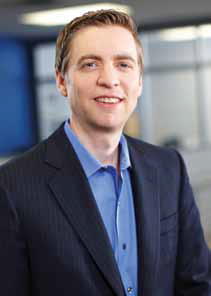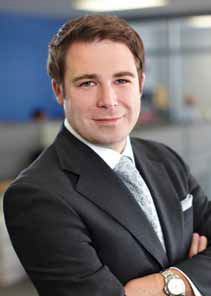Quick Bio
Company: Advanced
Headquarters: Mississauga, Ontario, Canada
History: Advanced was founded in 1995 by John Weatherhead, the founder of Reflex, an audiovisual dealer in the U.K., and U.S. distributor Stampede Presentation Products.
Co-President David WeatherheadWith a far smaller population than the U.S., the Canadian market doesn’t offer the same revenue opportunities as its neighbor to the south. This makes it all the more impressive when a Canadian integrator is able to crack SCN’s annual list of the Top 50 Systems Integrators in North America. Last year, placing number 36, the Mississauga, Ontario-based Advanced did just that. In fact, the firm had the distinction of being the sole Canadian integrator on the entire list
Started in 1995 with a focus on doing simple installations in the corporate market, Advanced has grown substantially over the last 18 years, expanding to 65 full-time employees, offices in Mississauga, Toronto, Ottawa, London, and Sudbury, and has branched out into the major verticals of corporate, education, and government.
“The company was actually founded by my father, John Weatherhead,” explained co-president David Weatherhead. “Before that he ran AV companies in the U.K.—he had a company called Reflex in the U.K., one of largest integrators in England, and then moved to Canada to set up Advanced.” Along the way, he also founded distributor Stampede Presentation Products in the U.S., eventually selling it to Mark Wilkins.
This family history has given Weatherhead exposure to both the distribution and integration side of the AV industry, enriching him with a valuable perspective on the ins and outs of both the distribution and integration models. “AV has been in my blood ever since I was a kid,” he proclaimed.

Vice President Mark McPhersonWhile when Advanced first began it almost solely focused on corporate clients, over the last seven years the firm has made massive inroads into the education sector. Interestingly, this expansion was actually necessitated by the tragic events of 9/11. “Up until then, we were quite focused on the enterprise market,” explained vice president Mark McPherson, “but when that happened, business across North America softened quickly. We looked at our business and saw an opportunity for massive growth in the education sector, and so we created a whole team around that focus.”
Now, Advanced’s business makeup is roughly 60 percent corporate and 40 percent education, with completely separate teams to handle each vertical. These entities have completely different branding, websites, and even go to market strategies, allowing them to have a more targeted sales focus and to develop clients within their respective spaces. “They really need separate hats on when they come into the office,” said Weatherhead. “From the types of people we hire to service delivery— how we charge for things—it’s a very different setup.”
On the corporate side, Advanced has approached the market by focusing on unique display products that competitors either aren’t offering or are hesitant to embrace. One example of this is the company’s use of Prysm’s LPD technology, which it used to create the largest curved video wall in the world at GE ’s Customer Experience Center in Markham, Ontario. “We wanted to find something innovative that no other dealer was representing out here,” said Weatherhead, “and we wanted to lead with it to basically create this unique innovative solution for our customers, and that seems to have worked out quite well for us.”
In education, Advanced has a team of trainers helping professional development. “Commoditization of AV products is happening a lot more rapidly than people in the industry thought it would,” explained McPherson, “so you need to differentiate yourself by trying to add a little bit of value along the way.” A big challenge is the changing structure of the classroom, especially in K-12. “You’ve got kids showing up with their own iPads, and there needs to be a technology structure in the classroom that enables kids with their own devices to be engaged and do one-on-one learning,” he continued.
Advanced handles roughly five to seven large projects a year. “The sales cycle for those projects is typically about a year,” said McPherson. These large projects contain a fairly even mix of corporate, government, and higher education installs. “We’ve also been dong a lot of work with restaurant chains looking for ways to differentiate themselves,” explained Weatherhead. “These chains are putting in a lot of video walls and relatively complicated systems. Every month we’re doing large hospitality installs.”
Although the Canadian market is more conservative in general than its U.S. counterpart, the company sees this as an opportunity. “That’s an advantage for us,” claimed Weatherhed, “because we’re not afraid to be the first to try some of these new technologies. Of course, we’ll only do that after we’ve done a validation—personally tested the technology—and are confident we can deliver on it.”
As far as the future is concerned, the company has been strengthening its engineering team to focus more on the IT side, which continues to grow in importance. “We’re starting to see benefits of that pay off,” said Weatherhead. “IT infrastructure is opening more doors, and we’re leveraging that.”
Chuck Ansbacher is the managing editor of SCN.
